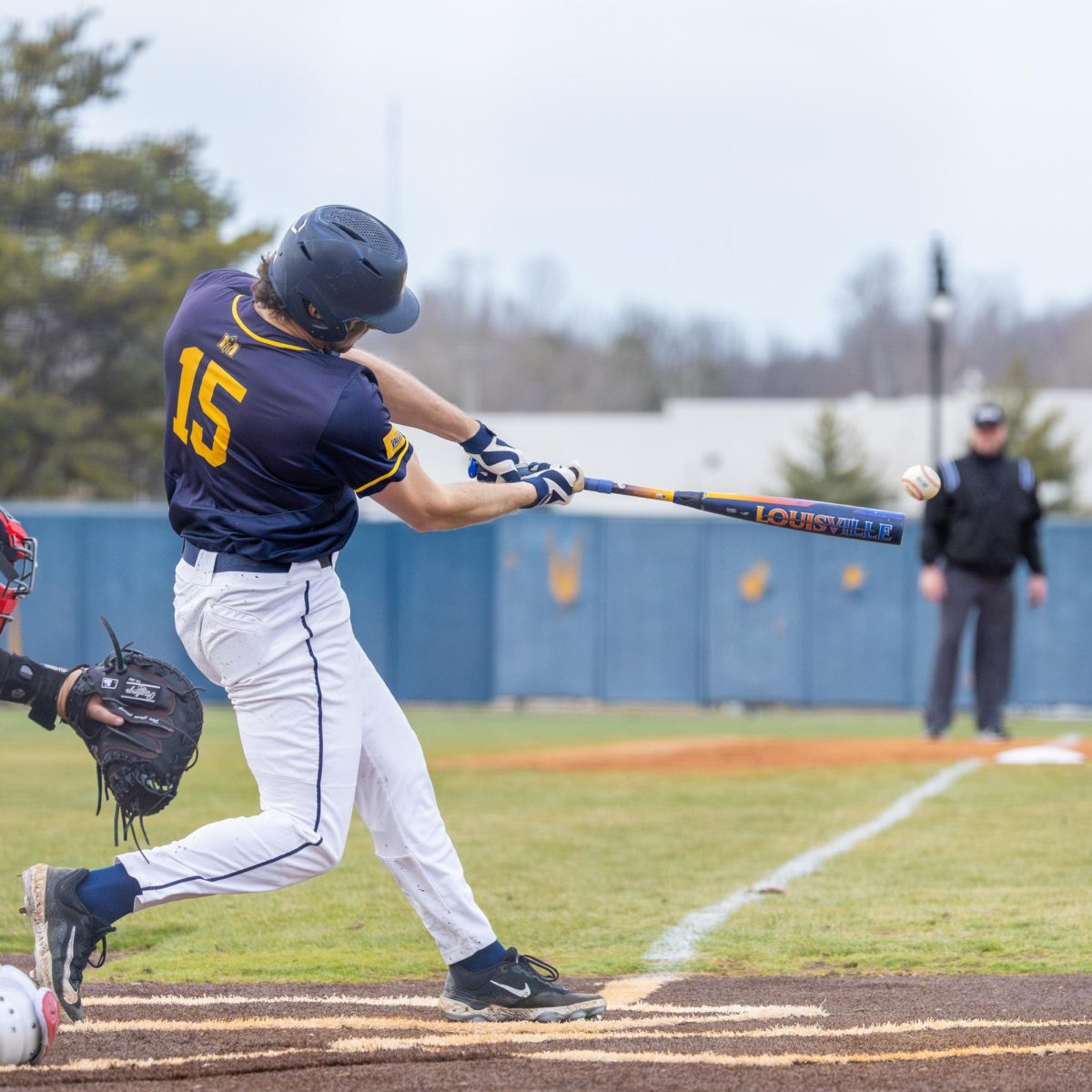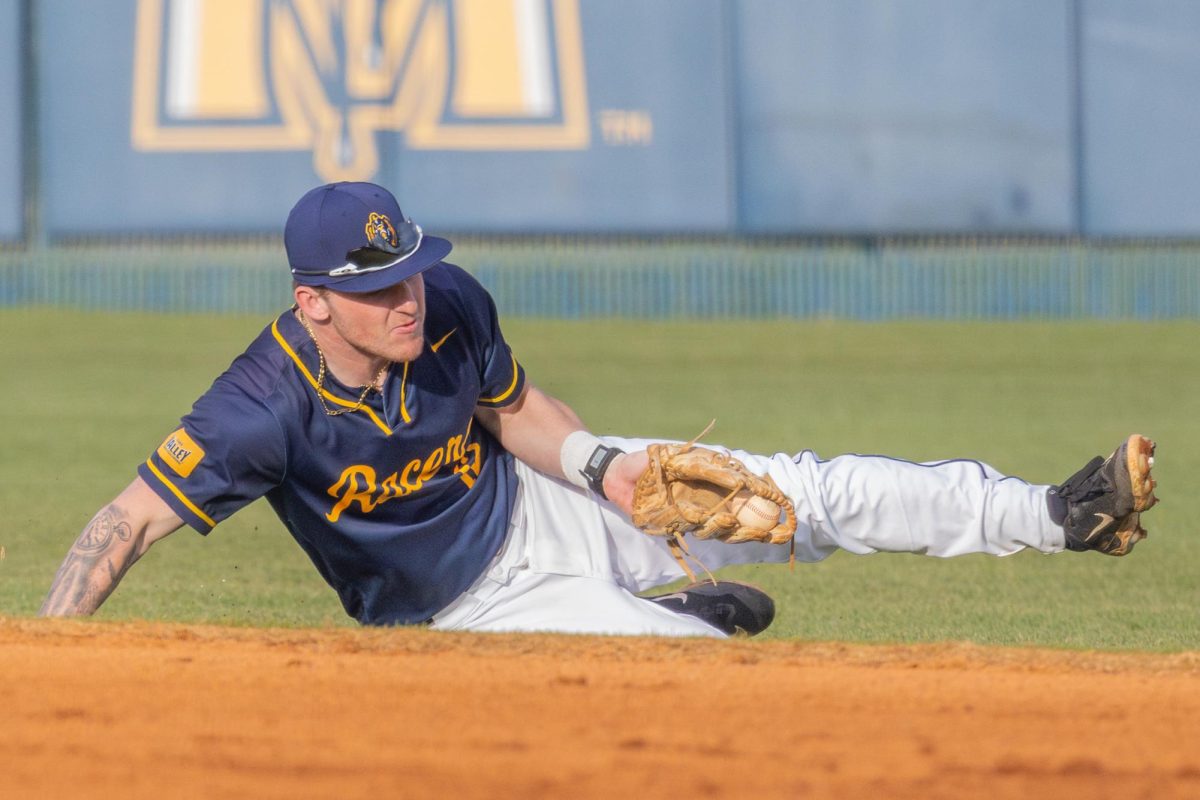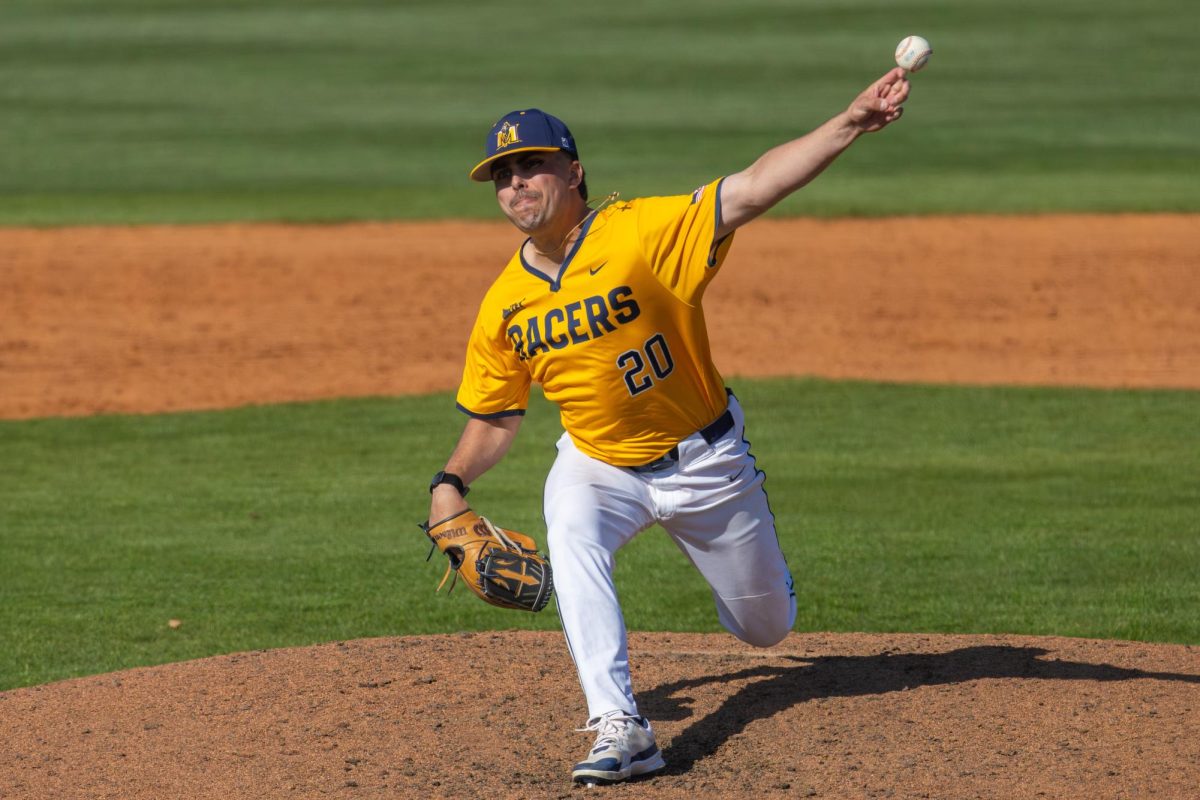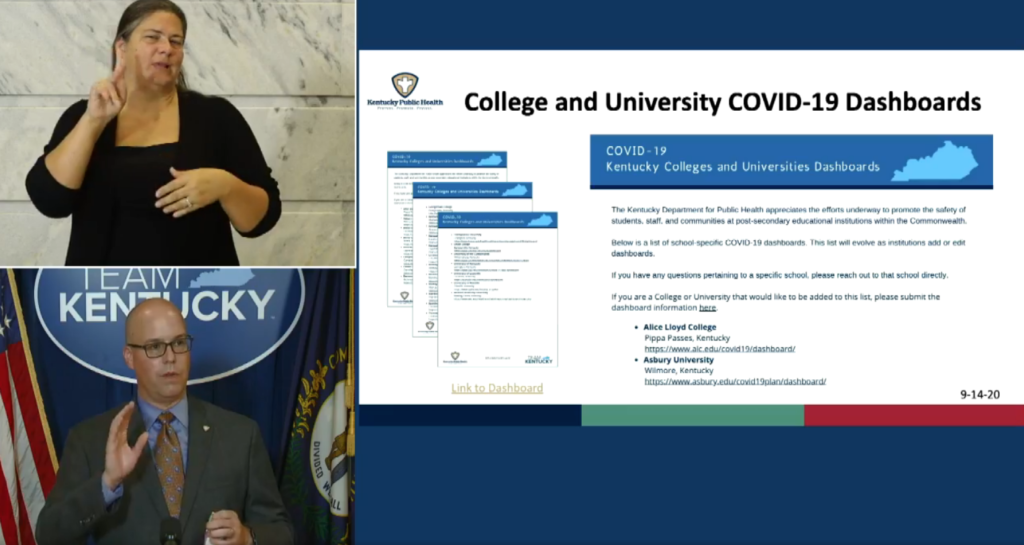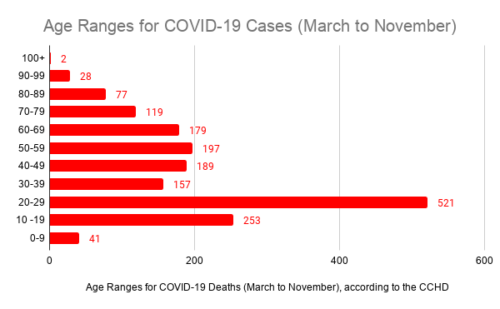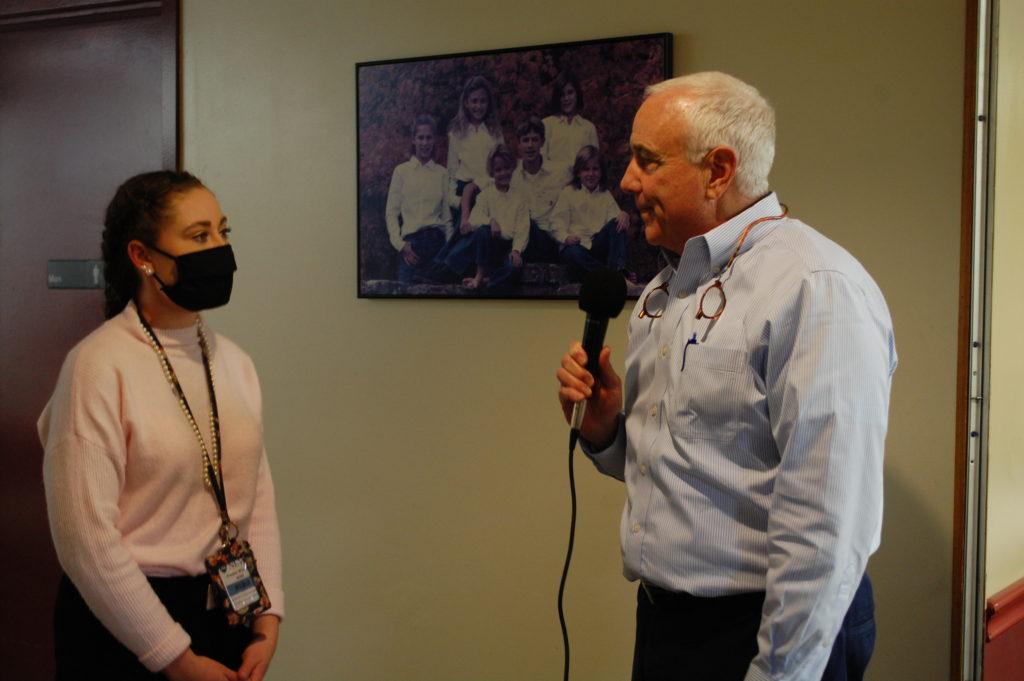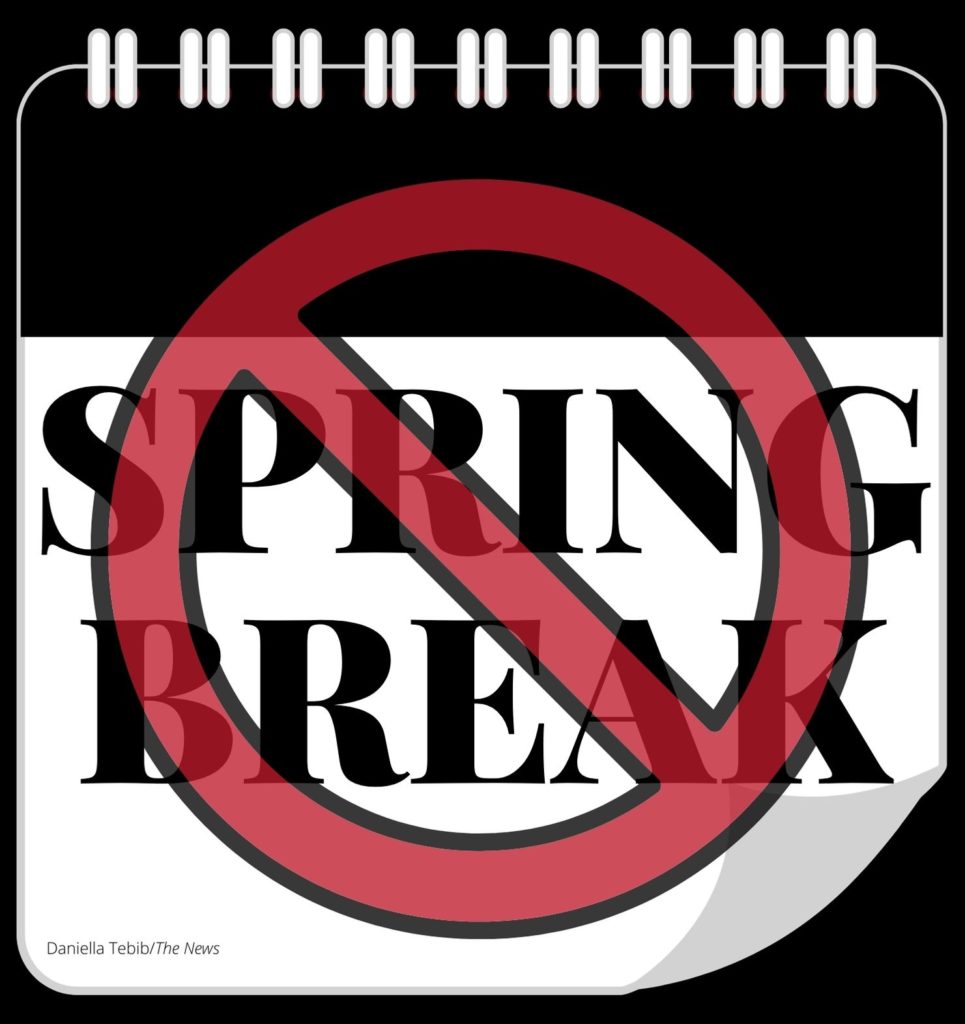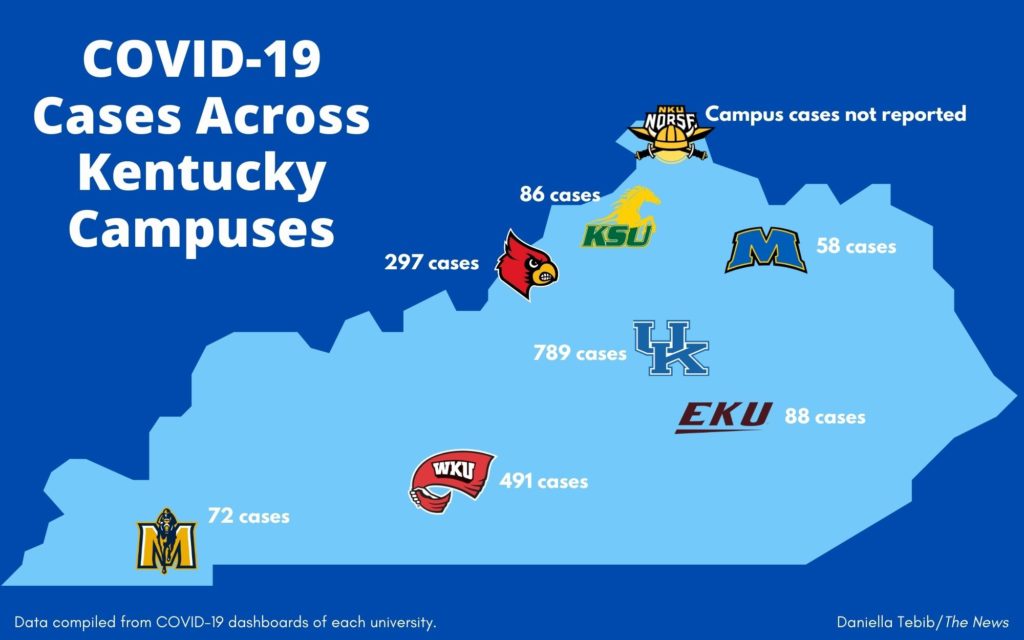Daniella Tebib
News Editor
dtebib@murraystate.edu
Updated on Sept. 16
In compliance with Gov. Andy Beshear’s and Public Health Commissioner Steven Stack’s requirements for reporting COVID-19 cases, President Bob Jackson said the Murray State COVID-19 dashboard will be updated twice per week.
Jackson said University administration communicates with the Calloway County Health Department daily and receives regular guidance from Stack and other state and federal officials.
During Beshear’s media briefing on Monday, Sept. 14, the new plan to report and track COVID-19 cases on college and university campuses in Kentucky was unveiled. On Wednesday, Sept. 16, Beshear reported there have been a total of 2,396 positive student cases and 83 positive faculty/staff cases based on information from 34 public and private institutions in Kentucky.
Stack discussed the details of the new reporting system the government is asking higher education institutions to adhere to because of their close proximity and relation to the communities they belong to.
Since students of colleges and universities are also members of the community, Stack said he has been treating them as part of the community. Because there is a lack of distinction between college and university students and the communities they live in, the guidelines for reporting and handling of COVID-19 is different from the standards K-12 schools are expected to abide by.
“In discussing with college and university presidents, each of these institutions has different resource bases, different approaches and plans they’ve tailored to their communities,” Stack said. “I asked them, given the choice between me architecting a solution that we put to them all or them adhering all voluntarily to the minimum expectations for dashboard for what they would do, and they have risen to the challenge.”
To ensure transparency with Kentucky residents and to track COVID-19 cases on campuses across the commonwealth, the Kentucky Department for Public Health has developed two easily accessible resources.
The KDPH has compiled the COVID-19 dashboards of each college and university in Kentucky. The full list, including links, of each COVID-19 dashboard can be found here.
The KDPH also reports verified COVID-19 information from 36 colleges and universities daily. The report can be found here. However, some of the numbers the KDPH reports do not match the self-reporting COVID-19 dashboards of colleges and universities.
“We do the best we can, but there’s a lot of different people collecting numbers,” Stack said. “I would use this information as a reliable way to find out information we’ve been able to verify and put here. This is not rumor; this is us talking to people and confirming the data. The colleges and universities are doing their own parallel version of what we’re asking K-12 to do.”
M. Christopher Brown II, president of Kentucky State University, also spoke at the media briefing about how colleges and universities have been handling the reporting of COVID-19 information.
“Higher education in the commonwealth is unlike K-12,” Brown said. “It’s comprised of public and private four-year colleges, community colleges, barber and beauty schools, trade academies and even research hospitals. So, unlike K-12, elementary and high schools, students attend our colleges by choice. They pay, in fact, for the opportunity to attend. As a result, we operate like non-profit or not-for-profit businesses in the commonwealth. While higher education does not have a clear mandate or guidance, we are operating under the health at work and that has been a blueprint for our success.”
Brown said the only way higher education institutions can continue to operate is through contact tracing.
“We have been relying on public health and the contact tracers that the governor has provided and working with our health departments to make sure we are keeping track of the rise and incidents in the population,” Brown said.
Deborah Birx, a member of the White House’s Coronavirus Task Force, was appointed the nation’s Coronavirus response coordinator by the Trump administration. Birx visited the University of Kentucky’s campus on Sept. 14 for a press conference regarding the status of COVID-19 on campuses in the commonwealth.
Birx applauded the plans Kentucky universities and colleges have put in place to reduce the transmission of COVID-19, but she said it is also up to the students as individuals.
“In the end, universities can have incredibly brilliant plans, but unless the students are part of that plan, have bought into that plan and are willing to follow the critical behaviors that we’re asking every student to follow, not only on campus but off campus, to ensure that transmission doesn’t occur, then it will occur,” Birx said.
Birx said she believes the majority of infections on college campuses are not happening because of the decisions to hold in-person classes but because of activities happening off campus.
“We’ve now seen throughout the summer that these infections are brought into institutions due to what happens off campus and in communities,” Birx said. “This is about really ensuring that there’s good behavior on campus and good behavior off campus.”
Birx also said she thinks it would be more dangerous for campuses to close and send students home based on campus closures across the country. Despite closing campuses, most students did not return home. Instead, a majority of them stayed in their college or university town in community and rental housing.
“It’s actually at this point more dangerous to both the students and the communities to have universities close or create the perception of closure of going exclusively online,” Birx said. “Then you’ll have students distributed throughout the community without real linkages to each other and the psychosocial support they need from in-person classes, and also the psychosocial support of those caring for them when they turn positive or have to be in quarantine.”
Jackson said University administration is happy with the campus community’s cooperation regarding the Racer Safe and Healthy Guidelines.
“I want to thank our students, faculty and staff for working hard to keep our COVID-19 infection rates low and adhering to guidelines in order to keep our campus safe and healthy,” Jackson said. “This has not been easy in all cases. We meet or communicate with our campus community nearly every day, and in most instances. We are very pleased with the adherence to the Racer Safe and Healthy Guidelines.”
As of press time, Murray State has reported 95 total positive COVID-19 cases on campus out of the 486 confirmed cases in Calloway County. Based on data collected from Murray State and the Calloway County Health Department, Murray State COVID-19 cases account for approximately 20 percent of Calloway County’s total cases.
For the week of Sept. 7, to Sept. 13, Murray State reported zero faculty/staff cases, 23 student cases, 68 recoveries and 95 total cases since Aug. 1. Murray State’s COVID-19 dashboard can be found here.
As of press time, the Calloway County Health Department reported 487 total confirmed cases with 434 recoveries, 41 isolated at home, three hospitalizations and nine deaths.
COVID-19 case information is reported on TheNews.org and our social media platforms as they are updated by the University and Health Department.













